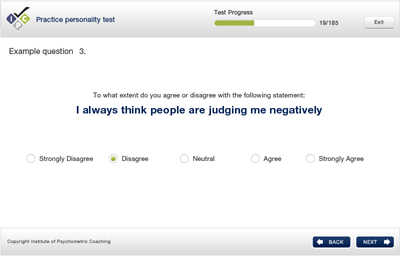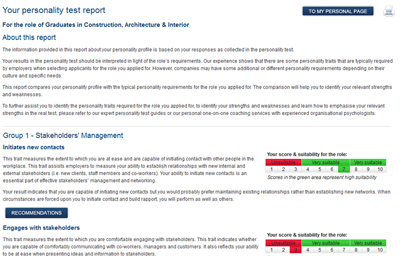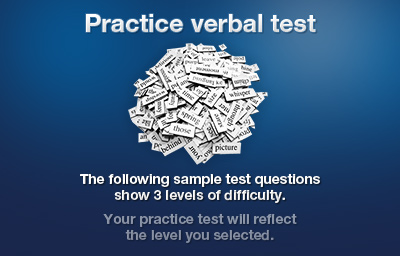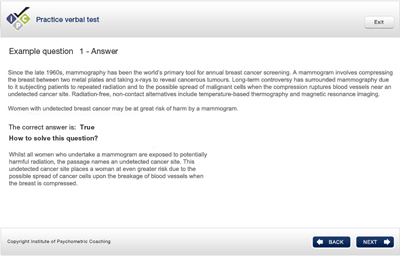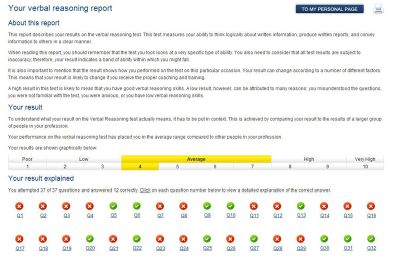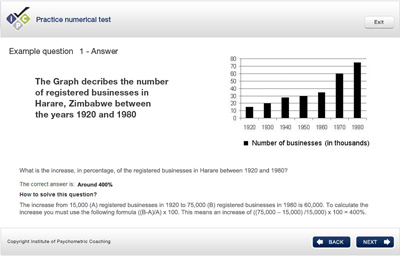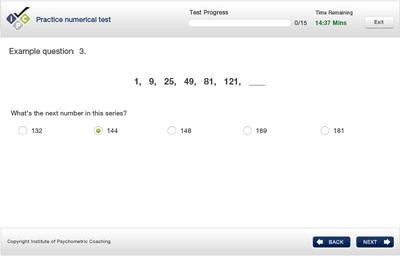Image Rotator Demo
This free psychometric guide offers an introduction to psychometric testing. You will be able to learn about the different psychometric tests, what to expect in each of the different tests, the level of difficulty, and how your scores are interpreted.
To prepare for the psychometric test and improve your skills, you can also take our practice tests and short online courses. Our courses provide easy-to-read explanations about the types of questions in each test and how to answer them example test questions and detailed answer explanations and effective strategies on how to prepare for the psychometric test.
Introduction to psychometric tests
Psychometric tests are a standard and scientific method used to measure individuals' mental capabilities and behavioural style. Psychometric tests are designed to measure candidates' suitability for a role based on the required personality characteristics and aptitude (or cognitive abilities). They identify the extent to which candidates' personality and cognitive abilities match those required to perform the role. Employers use the information collected from the psychometric test to identify the hidden aspects of candidates that are difficult to extract from a face-to-face interview. Read more about the psychometric test
Personality test
The personality test is usually the part which the majority of test-takers dread the most. It is the unknown factor of what the test might reveal about your personality that accelerates this fear. However, our extensive experience shows that an effective preparation can assist employees to improve their test scores. Personality tests measure your behavioural style, opinions and motivators— for example, whether you prefer working in a group or independently whether you prefer taking charge over situations or following others. Read more about the personality test
Aptitude tests
Aptitude tests are designed to measure your work-related cognitive capacity. The concept behind these tests is that each test question has only one correct answer, and everyone can correctly solve all the test questions. The only difference between people is in how quickly they can correctly complete the test (i.e. answer all the test questions). That’ s why these tests are always timed. The time is defined in such a way that only 1% to 5% of the population can correctly solve all the test questions within the allowed time frame. Read more about aptitude tests
Verbal reasoning test
The verbal reasoning test is one of the most commonly used psychometric tests (or aptitude tests) to measure candidates’ suitability and potential. There are several types of verbal reasoning tests. Read more about the verbal reasoning test
Numerical reasoning test
The numerical reasoning test measures your ability to interpret, analyse and draw logical conclusions based on numerical data presented in graphs and tables. It is important to note that this numerical reasoning test (contrary to easier numerical reasoning tests) is not designed to measure your mathematical ability but your ability to use numerical data as a tool to make reasoned decisions and solve problems. Read more about the numerical reasoning test
Abstract reasoning test
The abstract reasoning test is also called the conceptual reasoning test. It measures your lateral thinking skills or fluid intelligence, which are your ability to quickly identify patterns, logical rules and trends in new data, integrate this information, and apply it to solve problems. It measures what most people would refer to as ‘ street smarts’ and the ability to ‘ think on your feet’ . Read more about the abstract reasoning test
Assessment centres
Assessment centres are the longest and most complicated phase in the selection process. An assessment centre can take anything from half a day to three days and includes a battery of complicated and unfamiliar tests that provoke tension and pressure in most people. Read more about assessment centres





